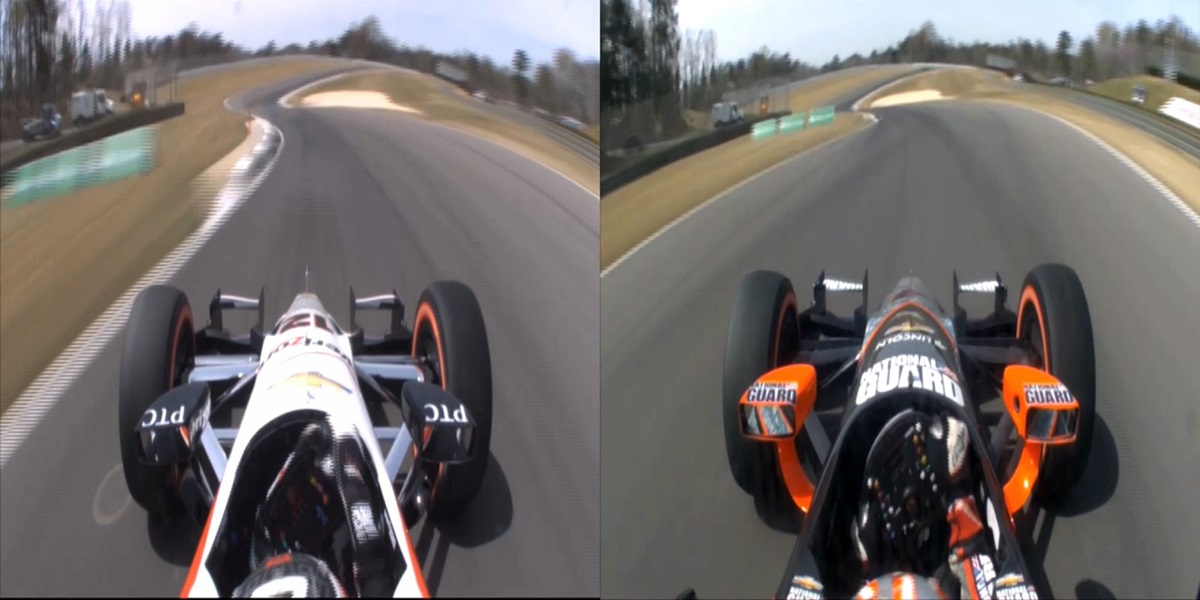
What Makes One INDYCAR Faster Than Another?
April 12, 2013 | By Marshall Pruett
With the exceptional talent behind the steering wheels of the 26 cars on the grid, the decades of engineering experience on most timing stands and countless hours of R&D spent on aerodynamics, handling and engine performance, the differences between a pole-winning car and one that struggles to crack the top 20 are becoming harder to distinguish.
It’s often down to little things like a pound of tire pressure or a click in one direction on an anti-roll bar. It could be raising or lowering the rear ride height by a few thousandths of an inch, or changing the width or height of a wicker on a front wing element.
Knowing that most IZOD IndyCar Series teams come incredibly close to finding the right chassis setup, watching someone like Will Power claim second place in qualifying at Barber Motorsports Park can be attributed to marrying his preferences on the small handling details to how the car is adjusted to perform.
If it feels right, not only will Team Penske driver Power push the Chevy-powered No. 12 car to its limit on each qualifying lap, but the car, as shown from the on-board footage, and his effort inside the cockpit will flow smoothly.
By the numbers, Power’s on-board video should look night-and-day different from that of JR Hildebrand, who qualified 24th.
Without watching the footage, one might expect Hildebrand’s Chevy-powered No. 4 car to be undriveable or for Hildebrand to make errors that rob him of crucial time on the stopwatch.
The most fascinating part of the equation is how similar the on-board footage is between Power and Hildebrand, between Team Penske and Panther Racing. Once the knockout qualifying session on the 2.3-mile, 17-turn Barber track has ended, Power was a half-second faster than Hildebrand--.506 of a second to be exact, and that .506 turned out to be a difference of 22 positions on the grid.
.506 of a second … 22 positions…
How insanely competitive and tight is competition in the 2013 IZOD IndyCar Series? There’s your answer.
Measuring the time gained or lost on their laps is the subject of this post-Barber video feature, and we’ve added in a running timestamp to help gauge where Power and Hildebrand differ on the road throughout a qualifying lap.
(The timestamp is for reference only—it isn’t an exact counter depicting their actual lap times. For the record, Power’s best was a 1:07.334 to Hildebrand’s 1:07.836.)
Watch their respective hand movements and listen to how and when each driver applies the throttle or brakes (I’ve put Power’s audio on the left channel and Hildebrand’s on the right).
What you’ll pick up right away is how stable Power’s Verizon Wireless-sponsored car is on corner entry, at the apex, and corner exit. His hands and steering wheels movements are sharp but smooth. There are no major instances where he’s fighting the car to turn in or to keep the back from sliding. It’s a fast, subtle lap.
Hildebrand is dealing with a more lively rear with his National Guard-sponsored car on corner exit, and often after needing to give repeated extra inputs to turn the car on corner entry and at the apex. His hands are making small corrections on a more frequent basis to get the car to rotate or to keep it from rotating, but nothing is drastic.
And for every one of those corrections made by Hildebrand, Power inches ahead.
The two teams also took a different approach to gearing, with Power using a longer ratio in fifth to carry the faintest bit of extra speed and momentum through Turn 7 (the right-hander coming up at about the 00:00:28:00 mark) and again in Turn 9/10 (the flat-out section after the Turn 7/8/8a complex at roughly 00:00:40:00).
Hildebrand’s car was geared to shift into sixth just before Turn 7 and before he arrived at Turn 9/10, giving up some engine revs and a few more inches to Power.
The biggest difference on the lap comparison comes in the final set of corners, Turns 12 through 14a.
Power, feeling a rock-solid car beneath him, charges over the crest at Turn 12, and the right-right-right Turn 13/14/14a. To attack Turn 12 and the subsequent corners through Turn 14a, a driver needs to feel the back of the car will stick as it gets light, and as the footage and audio reveals, Power is loaded with confidence.
For Hildebrand, and with the slightly tail-happy handling of his car throughout the lap, attacking Turn 12 with the same vigor as Power would most likely result in a spin. To compensate, Hildebrand isn’t as aggressive (starting at about 00:00:50:00), works with what he has, and makes it cleanly through the rest of the lap.
Hildebrand’s car control is among the best in the series, so while it might be tempting to say he needed to push harder over Turn 12 and deal with the oversteer, it would have resulted in a slower lap.
Watch the video a few times and pick out the minute items that add up to why one car went P2 and the other went P24. For all the time and money spent, that half-second advantage doesn’t look like much, does it?